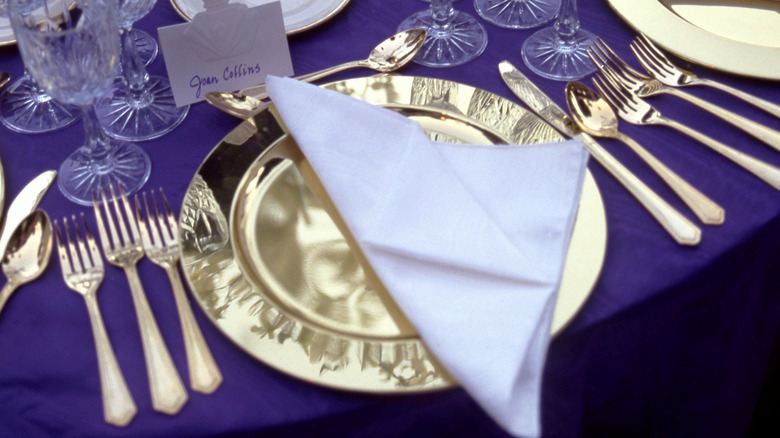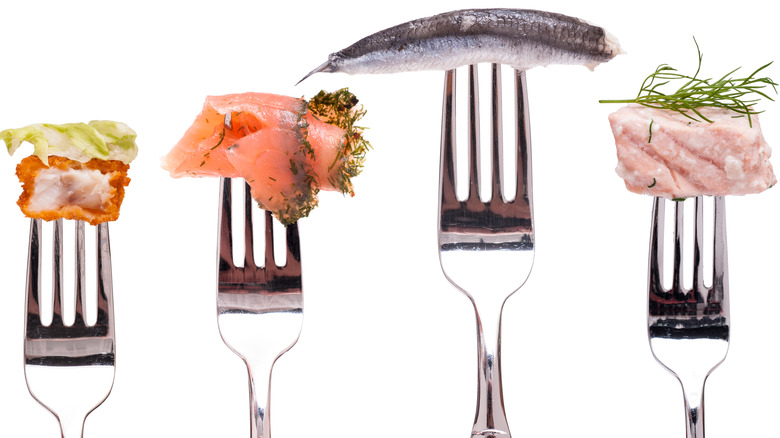What Is A Seafood Fork And How Is It Used?
An invitation to a formal seafood dinner party can inspire many feelings in you: thrill, intrigue, and tension. As you anticipate putting on social graces for the big event, using the correct silverware may keep you awake at night. How will you know when the seafood course is going to arrive? How will you recognize a seafood fork? Don't worry — a quick primer will get you all set.
In its simplest form, silverware etiquette dictates that you work from the outside in. Your forks will always be laid out on the left, and you start with the one on the outside and end with the one on the inside. The placement of utensils is guided by the menu, so you'll pick up the seafood fork when lobster, crab, mussels, or other shellfish are being served.
The fish fork first gained popularity in the 1800s and peaked during the Victorian era. Fine dining within this period usually included several courses, and each course demanded different cutlery sets of specialized flatware. This assortment of utensils was more than a flourish — the variety helped to distinguish the serving and eating of various food types.
The seafood fork has an interesting curved shape to the tines
Cocktail fork, salad fork, seafood fork, dinner fork, dessert fork — which fork is which? At a multi-course formal dinner, the seafood fork is the fourth fork laid on the table. It is placed to the right of the oval soup spoon. You'll recognize a seafood fork because it is more petite than a regular table fork yet larger than a salad fork. It typically has four tines, and the tines are slightly curved so that they can scoop out flesh from the shellfish. These tines are attached to a long, sometimes ornately decorated handle and are evenly sized.
There are other styles of seafood forks, too. An escargot fork has two long and pointed tines for prying and poking snail meat from its shell. An oyster fork is short with three short, slightly curved tines. Have you ever had trouble with the bones when eating fish? If yes, a fish fork is here to help you solve this problem. A fish fork has three or four tines, and its left tine is usually slightly larger than others, allowing you a bit of extra help to remove the skin and bones from the fish's flesh. Remember that, if you are ever in doubt about which fork to use, follow the lead of the dinner party host. Their fork choices set the tone for the rest of the guests.

